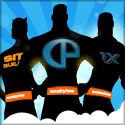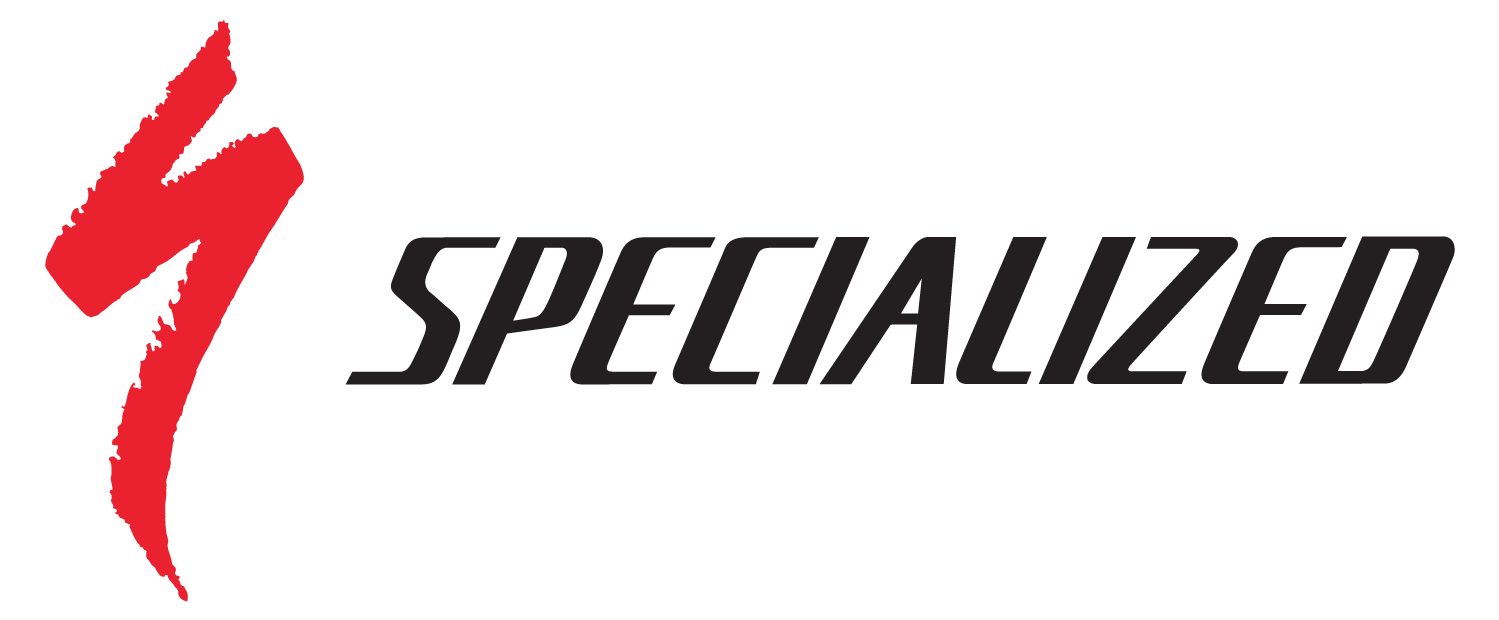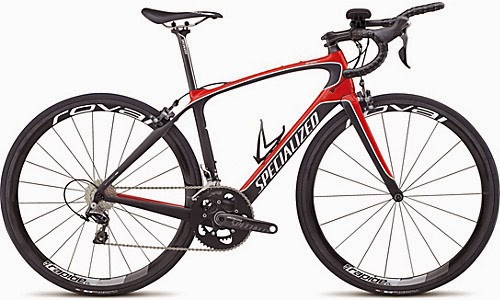Mike Sinyard built Specialized into a top bike brand by listening to what serious cyclists wanted.
- His toughest challenge was finding space to store them inside his eight- by 30-foot trailer
- Specialized has fostered a culture of innovation that has generated a long line of bike industry
- To support myself, I bought old bikes at flea markets and fixed them up, then put ads in the paper to sell them
- Started out as an aviation major but quit soon after I realized I was a terrible pilot. I decided to enroll in business school
- After graduation in 1972, I decided to take a bike tour through Europe. To finance the trip, I sold my old Volkswagen bus for $1,500
- Sitting with legendary component maker Cino Cinelli, I exaggerated a little and told him I was connected with all the top riders in the U.S
- In Italy the artisans who craft lugs, frames, and tubing are considered specialists. I named the company Specialized Bicycle Components after them
- If they gave me a cash advance for additional parts, I'd sell to them at a lower price
- I sent my roommate up there with a check to buy the shipment I had just sold to the store and then had him cancel my check. I called the owner and said, "That great sale you made? Well, that was my roommate, and now my check has the same value as the one you gave me."
- I lived without a car for five years after I started Specialized
When Mike Sinyard started importing Italian bike parts in 1974, his toughest challenge was finding space to store them inside his eight- by 30-foot trailer.
That turned out to be the least of his problems. Over the next 30 year he battled bankruptcy and monster competitors and competed for customers among finicky, demanding cyclists. Today Specialized, whose products sell in 1,200 of the nation's high-end bike shops, is a profitable $500-million-a-year company that will relaunch 150 of its models by the end of the year, including one designed specifically for women.
Sinyard's secret? Specialized has fostered a culture of innovation that has generated a long line of bike industry firsts - its 1981 Stumpjumper is enshrined in the Smithsonian Institution as the first mass-produced mountain bike. From the shop floor at his headquarters in Morgan Hill, Calif., Sinyard, 58, tells FSB his story.

|

|

|
I started out as an aviation major but quit soon after I realized I was a terrible pilot. I decided to enroll in business school. I thought there might be an opportunity importing high-end bike parts from Europe. Back in those days I had to search high and low for well-made components for my own bike, and I knew my friends wanted them too. While quality bikes were huge in Europe, over here most folks were riding basic Huffys. But there was a small contingent piecing together cool Italian bikes.
After graduation in 1972, I decided to take a bike tour through Europe. To finance the trip, I sold my old Volkswagen bus for $1,500. Three months into the tour, after riding from Amsterdam to Milan, I met a Swiss woman at a hostel and started talking to her about biking. She knew a few Italian cyclists and said she would help me land a meeting with key staff at Campagnolo and Cinelli, two big Italian bicycle manufacturers. Up to that point, I had been traveling in a pair of jeans and a sweater I hadn't washed in a couple of months, so I spent some of my remaining money on a suit so I wouldn't look like a bum.
Sitting with legendary component maker Cino Cinelli, I exaggerated a little and told him I was connected with all the top riders in the U.S. He seemed taken with my appreciation and enthusiasm for his products, and I used my remaining $1,200 to buy as many handlebars and stems as I could - exotic parts not readily available in the U.S. When I returned to San Jose I had no money left. I stored the products under my trailer so they wouldn't get wet.
In Italy the artisans who craft lugs, frames, and tubing are considered specialists. I named the company Specialized Bicycle Components after them because I wanted to have a connection to that European passion and quality, something that would distinguish my products from the mainstream bikes popular at the time.
I didn't have a car, so I came up with an efficient way to market the components: I outfitted my bike with the parts and rode to nearby stores. The first few dealers were skeptical; they had no idea who I was and didn't know if they could trust me to deliver additional inventory. But they bought the products and waited to see if I could deliver more.
I sold out the first shipment but didn't make money. My bank wouldn't give me a loan, so I tried another tactic: I went to the bike shops and told them that if they gave me a cash advance for additional parts, I'd sell to them at a lower price than if they insisted on buying from my inventory. For the shops that agreed, I used a markup price of about 15% more than what I paid wholesale. For stores that waited until they saw products, I'd tack on an additional 10%. That is how I financed the company for the next year and a half.
It wasn't always easy. I insisted that the stores pay COD, because I didn't have extra money. One time a $1,000 check from a store near San Francisco bounced. When I called the owner about it, he gave me some big story about how he'd eventually get around to paying it. I knew he was lying, and he refused to return the merchandise. I sent my roommate up there with a check to buy the shipment I had just sold to the store and then had him cancel my check. I called the owner and said, "That great sale you made? Well, that was my roommate, and now my check has the same value as the one you gave me."
At that time I was selling to about 25 bike shops, most of them in the Bay Area. In exchange for the pink slip to my trailer, the bank finally gave me my first loan, for $1,500. When I paid that back a few months later, they gave me an additional $10,000.
I lived without a car for five years after I started Specialized, which gave me a lot of time to think and observe how folks ride bikes. I was selling parts to a lot of independent bike-frame builders on the West Coast, and I started to notice their dissatisfaction with tires. The ones we were importing from Italy weren't very good. They'd have bubbles along the treads and didn't last. I remember calling the factory to tell them about it, but they told me I was crazy.
One of my friends, Jim Merz, was a framemaker based in Portland, Ore., who cycled from Oregon to Panama every year. I started researching rubber compounds so that I could develop my own tires. When I finally had something that worked for me, I sent it to Merz to test; he must have worn through about 40 tires.
After a year of experimenting, I launched our first product: the Specialized Touring Tire. At first only a couple of my most loyal bike shops bought them. But eventually the tires hit a chord with our customers - they told us the tires rode better than the imported ones. The tire was a breakthrough for us, brandwise. Suddenly we were more than just importers. We were innovators.
Our next big turning point came a few years later, in 1981. I was selling a lot of crank sets and tubing to Marin County framemakers such as Tom Richey, and I noticed that these guys were building bikes that were equipped to handle the rugged trails of Northern California's foothills. I had never seen anything like them. Intuitively, I knew this mountain bike was going to be the next big thing, a product of a West Coast culture not unlike surfing. Old folks and young kids who watched men ride these bikes had the same reaction - they wanted to try it.
We designed a bike with features that could withstand off-road trails. We named it the Stumpjumper, and it was the first mountain cycle that you could buy in bike stores. It turned out to be a niche-oriented product. Only about five or six of our stores wanted anything to do with it. The rest asked us, "What are you doing with this big kid's BMX bike? Customers will get hurt on that thing." Sales were slow until mountain biking finally took off in the mid-1980s.
We continued to launch new tires and bikes. In the early 1990s we had 115 employees and were selling to some 1,500 stores nationwide. But I remember thinking how I didn't really know what I was doing. I had never had another job and figured the time had come to hire a boss, someone from outside the cycling world who could lead us into the future.
I hired three full-time executives, experts with excellent track records in the consumer products industry. They told me that selling bicycles was no different from marketing basketballs or toothpaste. Rather than focusing on our core customers, Specialized started slapping its name on anything - hastily made bike helmets, water bottles, etc. We spun off a cheaper brand called Full Force, which sold at places such as Costco. It felt as if we were becoming more of a distributor than a group of artisans.
This sent a horrible message to our customers. By the end of 1996 we had lost about 30% of the bike store business and came within a few hundred dollars of declaring bankruptcy. The new executives left as things got worse, and I was stuck writing mea culpa letters to all the bike dealers, telling them how badly we blew it and outlining the steps we would take to fix our problems. It took about three years to get back on track and regain the business we had lost.
Sales started to stall again a few years later, so I approached someone within the industry whom I admired - Peter Moore, the former creative director at Nike and CEO of Adidas. He was an amateur cyclist, so I mailed him a bike helmet and asked if we could meet.
I flew to Portland, and he told me that I shouldn't run my company as a salesman. He advised me to compile a small book emphasizing Specialized's mission and pass it out to each employee. Of all the things I've done in my 33 years at the company, this has been the most valuable. I feel that if I got run over while riding my bike tomorrow, the company would continue in a clear direction.
For example, in 2003 we created a line of suspension bikes that sold for about $5,000 each. We heard that two or three of the frames had cracked when customers were riding them in extreme conditions. We could have dealt with the cases one by one, but instead, I recalled the entire line, about 1,500 bikes, because they didn't meet our standards as defined by the brand book.
We're still trying to be the best cycling brand in the world. I love what I do, and I will run this company as long as I am able. I want Specialized to be here forever, and we have a plan to accomplish that.
Source: http://money.cnn.com/2008/05/15/smbusiness/specialized_bikes.fsb/index.htm










Thank you so much for sharing this great stuff! I would love to Sell The Car that has not completely broken. Thanks for the nudge!
ReplyDelete